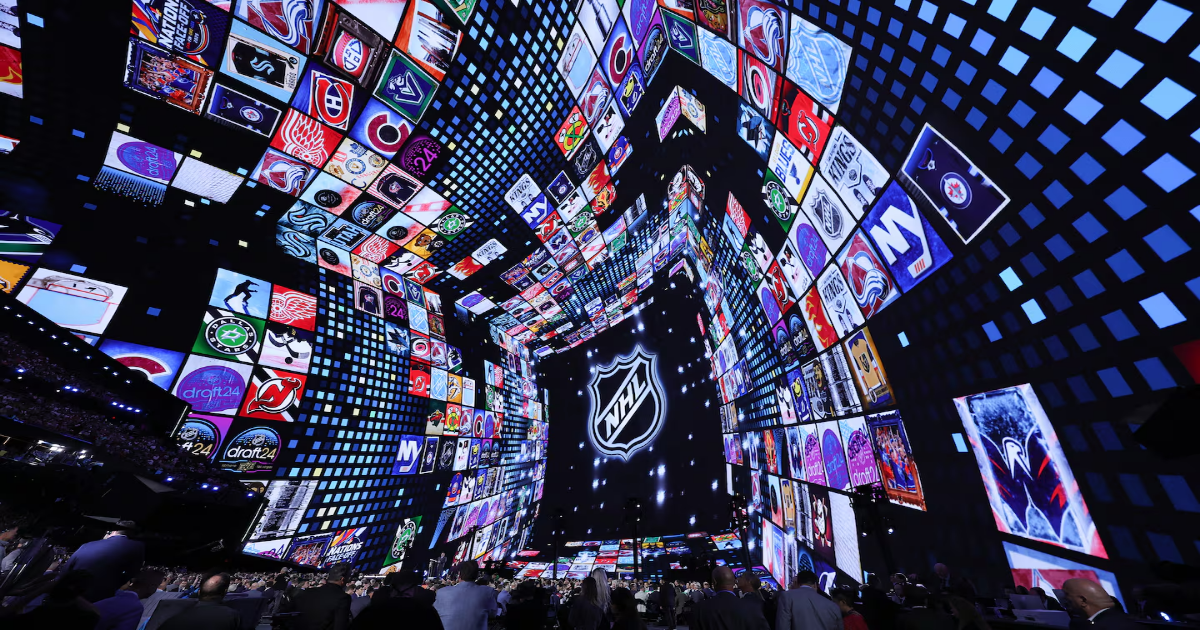No matter how the Ping-Pong balls pop up in the NHL Draft lottery Monday night, the Bruins will be left with a top-10 pick, a rare bit of real estate for them over the decades.
In fact, the Bruins will enter the lottery guaranteed a pick no lower than No. 7 in Round 1, to be held June 27 at the Peacock Theater in Los Angeles. It portends to be the Black-and-Gold’s highest pick in the draft since nabbing Tyler Seguin at No. 2 in 2010.
There’s no knowing the identity of the player they’ll select, of course, or how that 18-year-old prospect might impact the franchise’s fortunes in the short or long term. Meanwhile, here’s a quick primer on the lottery’s workings and how it will determine which one of five possible picks (No. 1, 2, 5, 6, or 7) the Bruins will end up holding.
The lottery, overseen again by commissioner Gary Bettman and top lieutenant Bill Daly, will be broadcast from NHL Network studios in Secaucus, N.J. It will determine the top two picks in the draft, and, in turn, the order of all the other non-playoff teams entered.
The first, and perhaps most important thing, to know: No team is allowed to move up more than 10 spots in the draft order. Ergo, only the clubs with the 11 worst regular-season records of 2024-25 are eligible to be awarded the No. 1 pick.
Fourteen Ping-Pong balls, numbered 1-14, will be loaded into a machine, with the balls visible as they whirl around in a wind-blown flurry.
Each of the 16 teams will be assigned a varying number of shares of the 1,001 combinations the 14 balls can deliver.
The No. 1 pick will be determined by the first four numbered balls that pop out of the machine in 20-second intervals.
If the four numbers to pop out are 11-12-13–14, a redraw will be ordered, a means of rounding out the shares of combinations that are appointed to the 16 teams.
If no team ranked No. 2-11 entering the lottery moves up to No. 1 (currently held by San Jose) on that first drawing, then the Sharks will be locked in at the top spot. A second drawing, identical to the first, immediately will follow to determine the No. 2 pick. Like the first drawing, no club can move up more than 10 spots.
The Bruins will enter the lottery with the No. 5 pick in hand, by virtue of their 33-39-10 regular-season mark, tied for the worst in the Eastern Conference. They could move up to No. 1 or 2. They also could remain locked in at No. 5 if none of the 11 teams below them leapfrogs ahead in either drawing. Or they could slip to No. 6 or 7 if one or two clubs were to jump ahead of them.
Based on their assigned share of the four-number combinations, the Bruins will enter with an 8.5 percent chance of clinching the No. 1 spot. San Jose (18.5 percent), Chicago (13.5), Nashville (11.5), and Philadelphia (9.5) enter with better odds than the Bruins.
The odds of the six other clubs picking off the No. 1 spot range from 7.5 percent (Seattle) to 3 percent (New York Rangers).
The draft will be the 58th in the league’s post-expansion era, dating to when the Original Six doubled in size prior to the 1967-68 season.
Beginning with the 1968 draft, when the NHL’s 12 teams combined to make 24 picks, the Bruins have selected only a dozen times in the 1-7 range, including No. 1 choices Gord Kluzak (1982) and Joe Thornton (1997). Their only other No. 1 pick was in 1966, during the Original Six era, when they selected Barry Gibbs.
The greatest draft pick in Bruins history, Ray Bourque, was selected No. 8 in 1979. To date, the legendary defenseman remains the lone Hall of Famer drafted by the Bruins, post-1967.
In 1964, oft-forgotten by their fans, the Bruins drafted Ken Dryden with the No. 14 pick, but weeks later traded him to Montreal, well before he started to forge his Hall of Fame career in the Canadiens’ net.
The 12 players the Bruins chose with one of the top seven picks in the post-Original Six era were: 1969 — 3. Don Tannahill (F), 4. Frank Spring (F); 1970 — 3. Reggie Leach (F), 4. Rick MacLeish (F); 1971 — 6. Ron Jones (D); 1973 — 6. Andre Savard (C); 1982 — 1. Gord Kluzak (D); 1987 — 3. Glen Wesley (D); 1997 — 1. Joe Thornton (C); 2000 — 7. Lars Jonsson (D); 2006 — 5. Phil Kessel (F); 2010 — 2. Tyler Seguin (C).
Last year’s lottery did not alter the order of selection. San Jose and Chicago were left with the Nos. 1 and 2 picks, respectively, maintaining the positions they held based on the regular-season standings.
The Sharks won the first drawing, with the numbers 10, 2, 7, and 11. In a lottery first, the Sharks also won a second and third drawings, leading to a fourth drawing won by the Blackhawks with 6, 11, 3 and 14. The only number to pop up in each of the four drawings: 11.
Kevin Paul Dupont can be reached at [email protected].
